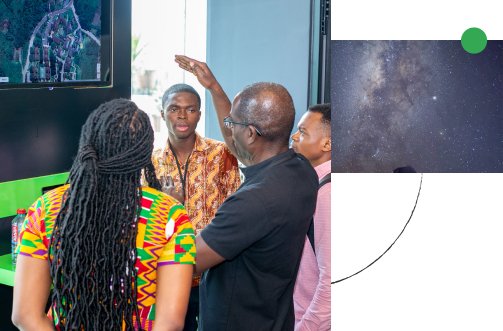
Yossi Matias
Under Yossi’s leadership, world-class global teams are leading breakthrough research on Foundational Machine Learning & Algorithms, Computing Systems & Quantum Computing, Science, AI for Societal Impact in Health, Climate, Education and Socio-technical research, and foundational advancements in Generative AI - shaping the future of technology and driving and accelerating the magic cycle between research and real-world impact.
Recent research breakthroughs include speculative decoding, generative UI, genAI factuality, AI Co-Scientist, Earth AI, Quantum Echo algorithm, DeepSomatic, MedGemma, Flood Forecasting, FireSat, LearnLM.
Yossi was previously on Google Search leadership for over a decade, driving strategic features and technologies, and pioneered Conversational AI innovations to help transform the phone experience and help remove barriers of modality and languages. He was also the founding lead of Google center in Israel and supported other global sites. During his tenure at Google Yossi founded and spearheaded initiatives such as Google's AI for Social Good, Crisis Resilience, Google for Startups Accelerator, social and cultural initiatives seeding Google Arts & Culture, and programs fostering startups, sustainability, and AI literacy for youth.
Prior to Google Yossi was on the Computer Science faculty at Tel Aviv University, a visiting professor at Stanford, and a Research Scientist at Bell Labs. He’s published over 200 papers and is the inventor of over 80 patents. He pioneered some of the early technologies for internet privacy, contextual search, and the effective analysis of Big Data. He is a recipient of the Gödel Prize, an ACM Fellow, and a recipient of the ACM Kanellakis Theory and Practice Award for seminal work on streaming algorithms, data sketches, and large-scale data analytics
Yossi has a track record of impact-driven breakthrough research and innovation, and extensive product leadership, transforming products and advancing AI to help address global challenges.
-----------------------------------------------
More about work Yossi has been leading in recent years:
Search: Google Search leadership for over a decade included Autocomplete, Google Trends, Search Console, and Search experiences in weather, sports, dictionary and more.
Generative UI: pioneering work on generative UI, enables AI models to create immersive experiences and interactive tools and simulations, all generated completely on the fly for any prompt, launched in Gemini app and Google Search AI Mode.
Speculative Decoding: extensive research on efficiency for generative AI, including Speculative Decoding which has impact across the industry.
Generative AI Factuality: extensive research work on consistency and multi-modal factuality, published benchmarks (TRUE, FACTS) and leading to Double Check.
Conversational AI: Pioneering innovations in conversational AI as the "ultimate user interface" towards ambient intelligence and new experiences. Google Duplex - from a defining moment in AI to helping people and businesses well over 1 trillion times to getting things done faster directly from Search. Helping transform the phone experience (Call Screen, Hold for Me) and helping remove barriers of modality and languages making content and communication more universally available (Live Caption, Live Relay, Euphonia, Read Aloud).
Google Earth AI bringing together geospatial models Gemini advanced reasoning to Google Earth AI, to help tackle the planet's most critical needs.
Health AI: Work on Google’s Health AI is driving AI research to help transform healthcare from innovation to impact and help make healthcare more accessible for everyone, with multiple breakthroughs including Med-PaLM(1, 2), MedGemini(3, 4), AMIE(5,6), MedGemma.
Scientific discovery: Using AI to drive scientific research with greater real-world benefit. Accelerating scientific discovery with AI Co-Scientist, powering science breakthroughs and advancing healthcare and scientific discovery.
Climate Resilience: Leadership of AI for Climate and Sustainability, work on climate crisis mitigation (Greenlight,Contrails) as well as climate crisis nowcasting and forecasting - with leadership work on Google’s Crisis Response initiative (SOS alerts, flood forecasting, wildfire detection, FireSat). From research to climate resilience, Google Earth AI.
Education: Developing LearnLM. - enabling the best LLM for education tasks. Reimagening the textbook with Learn Your Way.
Special initiatives: Founding lead of Google’s AI for Social Good, Google for Startup Accelerator (from supporting early stage entrepreneurs to particular focus on AI & ML and to focus on Sustainability, expanding to regional programs and globally). Founding lead of Mind the Gap and Hello Tech. Pioneered an initiative of bringing online hundreds of heritage collections (including the Dead Sea Scrolls and the Nelson Mandela archive), and helped establish Google’s Arts and Culture.
Global sites: Founded and has lead Google’s center in Israel, through growth to over 2500 on staff, and founding lead of Campus TLV. Also supported Google’s growth (4X) in Bangalore, India, and oversaw Google’s Expanding Research Center in Africa, innovations for Africa and the world, initiating AI Community Center in Accra and supporting the future of AI Research in Africa and globally..
Additional work: Sketches, streaming algorithms, approximate query answering (seminal work - AMS, Synopses, AQUA Project - see awards below), Privacy and Security - early work on privacy and personalization (see also NYTimes article) based on the novel Janus function, early lightweight security primitives, and foundations for BLE ephemeral IDs); Parallel computation (highly parallel randomized algorithms, parallel models, parallel scheduling..); Compression (LZ improvements, compression in networks,.. ) and more (see publications).
Awards: Yossi is an ACM Fellow for contributions to the analysis of large data sets and data streams. His foundational work on data streams, data synopses and sketches, motivated by computational challenges in what was then the world’s largest data warehouses, was recognized with the Gödel Prize in Theoretical Computer Science, and with the ACM Kanellakis Theory and Practice Award for the instrumental role it played "in the development of the field of streaming algorithms, which is one of the most prolific and highly regarded areas of data management research" and its broad applicability to large-scale data analytics.
Research Areas
-
Algorithms and Theory
-
Data Management
-
Data Mining and Modeling
-
Distributed Systems and Parallel Computing
-
Education Innovation
-
Health & Bioscience
-
Human-Computer Interaction and Visualization
-
Information Retrieval and the Web
-
Machine Intelligence
-
Natural Language Processing
-
Security, Privacy and Abuse Prevention
-
Speech Processing
